Breastfeeding is an endeavor shaped by both cultural practices and individual experience. While many lactating parents anticipate a natural and uncomplicated feeding process, a significant portion encounter pain, latch difficulties, or structural challenges, particularly during the early postpartum period. The issue of nipple shields—instruments designed to alleviate such challenges—remains a source of debate within the lactation community.
This article examines nipple shields within the framework of postpartum support, emphasizing empirical evidence and objective evaluation. For clients and practitioners utilizing postpartum doula, birth doula, and broader doula services provided by Doulas of the Valley, adopting an informed perspective is paramount. Here, readers will find an extensive analysis of nipple shields’ origins, design, clinical indications, evidence of efficacy and risk, as well as best practices for implementation.
Design and Intended Purpose
A nipple shield is a thin, flexible device typically made of medical-grade silicone. It is placed over the mother’s nipple and areola during breastfeeding, ostensibly forming a barrier that reduces friction, shields the nipple, and facilitates the infant’s latch by enhancing the shape and firmness of the nipple.
Clinically, nipple shields are recommended in a circumscribed set of circumstances, particularly:
- Infants with latch difficulties due to anatomical differences (e.g., tongue-tie, cleft palate, prematurity)
- Maternal nipple pain, trauma, or breakdown that prevents comfortable feeding
- Flat or inverted nipples, complicating the latching process
Simultaneously, some practitioners and parents utilize shields in attempts to improve feeding absent a clear clinical indication, an issue warranting careful scrutiny.
Clinical Evidence Supporting Nipple Shield Use
Case Studies and Observational Trials
Several observational studies indicate that, in instances of persistent latch difficulty or infant prematurity, temporary use of nipple shields can support sustained breastfeeding. Shields offer a more uniform surface for the infant’s developing oral-motor skills, potentially alleviating feeding stress for both mother and child.
Premature infants, who often lack the muscular strength for effective breastfeeding, may benefit particularly from shield use. Shields can mimic the structure of a bottle nipple, providing a familiar stimulus while preserving breast milk’s unique nutritional and immunological benefits.
Randomized Trials and Systematic Reviews
Robust, randomized controlled trials assessing nipple shield efficacy remain few. Systematic reviews, such as those within the Cochrane Database, indicate mixed outcomes. Some mothers report relief from pain and improved feeding behavior; others note diminished milk transfer, reduced infant weight gain, or shortened periods of exclusive breastfeeding.
Significantly, evidence suggests that shields are most effective when introduced with skilled lactation support and with clear plans to discontinue use as underlying issues resolve. The prevailing clinical consensus is circumspect, favoring shields primarily as an intervention of last resort.
Risks and Points of Concern
Despite the refined design of modern nipple shields, several risks are documented:
- Reduced Milk Transfer: When shields are ill-fitting or improperly used, infants may receive less milk, risking insufficient weight gain and adverse feeding outcomes.
- Suppressed Lactation: Ineffective breast stimulation may diminish milk production, with the risk of early weaning.
- Dependence and Delayed Resolution: Extended shield use, particularly in the absence of regular lactation support, can perpetuate feeding challenges.
- Hygiene Risks: If insufficiently sterilized, shields may facilitate bacterial contamination, increasing the risk of nipple and oral infections.
Consequently, clinical authorities, including the Academy of Breastfeeding Medicine and the International Lactation Consultant Association, urge caution regarding shield use and recommend diligent postpartum follow-up.
The Role of the Postpartum Doula and Birth Doula
For clients of Doulas of the Valley and comparable services, the implementation of nipple shields underscores the necessity of specialized support. Postpartum doulas act as informed advocates, assisting parents in interpreting lactation consultant guidance, ensuring shield use is anchored by comprehensive latch assessment, and offering practical instruction on shield hygiene and weaning.
Additionally, doulas educate families regarding alternative strategies for addressing feeding difficulties, such as skin-to-skin contact, breast compression techniques, and proper positioning. Their ongoing engagement facilitates the early detection of complications associated with shield use, including reduced infant output or maternal infection.
Objective Guidelines for Shield Use
Current scholarly consensus affirms that nipple shields should only be employed when:
- Structural impediments to breastfeeding are present, and prior interventions have not succeeded.
- Ongoing, intensive support from lactation professionals is available.
- Parents are educated about potential risks, signs of inadequate feeding, and the necessity of regular assessment and planned discontinuation.
Such rigor reflects the broader tradition of evidence-based postpartum care, positioning the birth doula and postpartum doula as essential facilitators in this context.
Best Practices and Recommendations
Given the extant body of knowledge, the following protocols are recommended for parents and professionals considering nipple shield use:
- Assessment First: Conduct a comprehensive evaluation of the breastfeeding dyad before introducing a shield.
- Proper Fitting: Ensure shields are appropriately sized and made from high-quality, hypoallergenic materials.
- Lactation Consultation: Collaborate with a qualified lactation consultant to optimize outcomes and limit complications.
- Monitoring and Documentation: Carefully track infant feeding behaviors, urine/stool output, and weight gain.
- Planned Discontinuation: Treat shields as temporary aids. Parents should be educated on transitioning to direct breastfeeding as promptly as possible.
Expanding the Conversation About Postpartum Support
The discourse regarding nipple shields ultimately illuminates the complexity and individuality inherent to breastfeeding. No universal solution exists—only informed choices made collaboratively with trusted professionals. For families in Greenwich, CT, and beyond, Doulas of the Valley provides an array of postpartum doula, birth doula, and expertly administered doula services to support these decisions with evidence-based care.
Making Sound Choices in Breastfeeding
Nipple shields are neither universal solutions nor inherent hazards; their success and safety are determined by context, education, and ongoing support. With vigilant oversight, shields may remove formidable obstacles to successful breastfeeding. Without proper guidance, their risks may surpass their benefits.
For new parents navigating the intricacies of infant feeding, consultation with expert doulas and lactation professionals remains the most prudent course. Doulas of the Valley stands prepared to assist, integrating historical insight, clinical expertise, and compassionate care.



